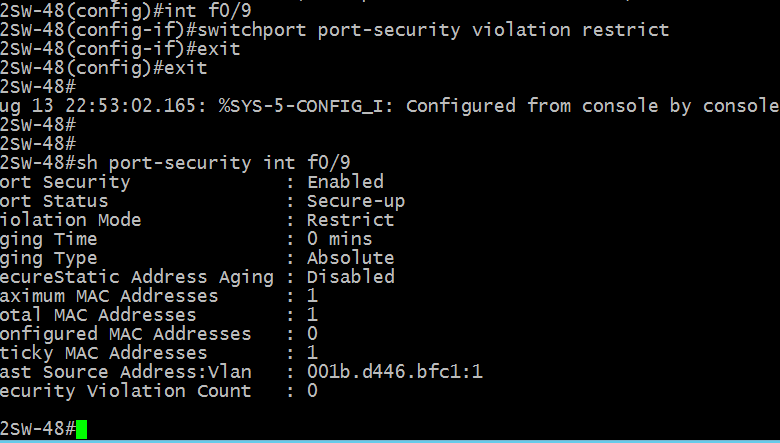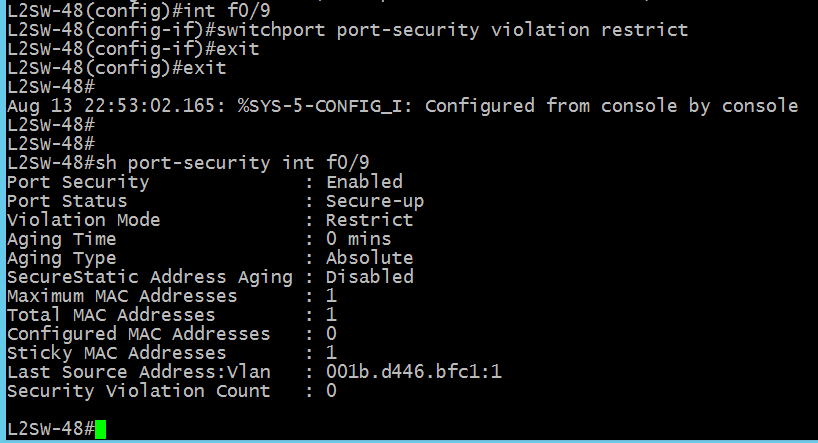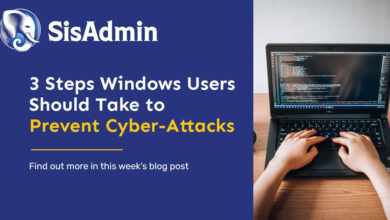
Cisco to Buy Cybersecurity Startup Portshift
Cisco to buy cybersecurity startup Portshift? Whoa! This is huge news for the cybersecurity world, and frankly, I’m buzzing with excitement. This acquisition isn’t just another corporate merger; it’s a strategic power play that could reshape the landscape of enterprise security. Portshift’s innovative technology, focused on cloud-native security, is a perfect complement to Cisco’s existing portfolio, and this move signals a major commitment to securing the increasingly complex cloud environments businesses rely on.
Let’s dive into what this means for everyone involved.
The potential benefits are enormous. Think about the combined strength of Cisco’s global reach and established customer base with Portshift’s cutting-edge solutions. This isn’t just about adding another product; it’s about creating a more comprehensive, integrated security platform that offers businesses unprecedented levels of protection. We’re talking about smoother deployments, improved threat detection, and ultimately, a stronger defense against increasingly sophisticated cyberattacks.
The real question is, how will competitors respond to this seismic shift?
Cisco’s Acquisition Strategy
Cisco’s acquisition of Portshift represents another strategic move in its ongoing efforts to bolster its cybersecurity portfolio. This isn’t a singular event, but rather a continuation of a pattern established over years of targeted acquisitions within the cybersecurity space. Understanding this pattern is key to grasping the significance of the Portshift deal.Cisco’s historical acquisition pattern in cybersecurity has focused on acquiring companies that offer complementary technologies or fill gaps in its existing product lines.
This strategy allows Cisco to rapidly expand its capabilities, rather than solely relying on organic growth and internal development. They’ve favored companies with strong technological innovation and a proven track record, prioritizing solutions that integrate well with their existing infrastructure. This approach minimizes disruption and allows for quicker market penetration of new technologies.
Comparison of Portshift and Cisco’s Existing Cybersecurity Offerings
Portshift’s technology specializes in Kubernetes security, providing a comprehensive solution for securing containerized workloads. This contrasts with Cisco’s existing portfolio, which, while robust, has historically focused more on traditional network security and endpoint protection. Portshift’s strengths lie in its ability to provide granular control and visibility into containerized environments, a rapidly growing area where traditional security solutions often fall short.
The acquisition bridges a crucial gap in Cisco’s capabilities, allowing them to offer a more complete security solution for modern cloud-native applications. For example, while Cisco offers strong firewall and intrusion detection systems, Portshift provides deeper visibility and control within the application layer of Kubernetes deployments, addressing a key challenge for many organizations migrating to cloud-native architectures.
Cisco’s Motivations for Acquiring Portshift
Several factors likely motivated Cisco’s acquisition of Portshift. Firstly, the increasing adoption of cloud-native applications and Kubernetes necessitates robust security solutions specifically designed for these environments. Acquiring Portshift allows Cisco to immediately address this growing market demand, providing a competitive edge against other cybersecurity vendors. Secondly, Portshift’s innovative technology, particularly its agentless approach to security, offers a more efficient and less intrusive way to secure containerized workloads.
This aligns with Cisco’s focus on providing streamlined and integrated security solutions. Finally, Portshift’s talented engineering team and customer base represent valuable assets, accelerating Cisco’s ability to innovate and expand its market reach within the Kubernetes security domain.
Hypothetical Timeline for Portshift Integration
A realistic timeline for integrating Portshift into Cisco’s product portfolio might unfold as follows:
- Phase 1 (0-3 months): Initial assessment and planning. This phase involves understanding Portshift’s technology, customer base, and integration requirements with Cisco’s existing infrastructure. Teams from both companies would collaborate to define a clear roadmap for integration.
- Phase 2 (3-6 months): Technical integration and testing. This involves integrating Portshift’s technology with Cisco’s existing security platforms, such as its cloud security offerings. Rigorous testing and quality assurance would be essential to ensure seamless functionality and compatibility.
- Phase 3 (6-12 months): Product launch and go-to-market strategy. This involves launching the integrated product to the market, leveraging Cisco’s extensive sales and marketing channels. Training and support materials for customers and partners would also be developed during this phase.
- Phase 4 (12-18 months): Ongoing enhancements and feature additions. Post-launch, Cisco would continue to enhance and expand the capabilities of the integrated product, based on customer feedback and market trends. This could involve integrating additional security features or expanding support for other cloud platforms.
This timeline is, of course, a hypothetical projection, and the actual integration process may vary depending on unforeseen challenges or opportunities. However, it provides a reasonable framework for understanding the potential trajectory of Portshift within Cisco’s ecosystem. Similar integrations, such as Cisco’s acquisition and integration of other security companies, provide precedent for this estimated timeline.
Portshift’s Technology and Market Position: Cisco To Buy Cybersecurity Startup Portshift
Portshift’s acquisition by Cisco highlights its significant role in the rapidly evolving cybersecurity landscape. The company offered a unique approach to container security, differentiating itself through its agentless architecture and comprehensive runtime protection. Understanding its technology, market standing, and competitive landscape is crucial to assessing the strategic value of this acquisition for Cisco.Portshift’s Core Technology and Unique Selling PropositionsPortshift’s core technology centered on an agentless runtime security platform for containers and Kubernetes environments.
This agentless approach avoided the performance overhead and management complexities often associated with traditional agent-based security solutions. Instead, Portshift leveraged Kubernetes’ built-in APIs and network visibility to monitor and protect containerized applications. Its unique selling propositions included its ability to provide comprehensive visibility into container activity, automatically enforce security policies, and detect and respond to threats in real-time, all without requiring agents to be installed on each container.
This minimized resource consumption and deployment complexity, making it particularly attractive to organizations with large-scale container deployments.
Portshift’s Key Competitors
Portshift competed in a crowded but rapidly growing market for cloud-native security solutions. Key competitors included established players like Aqua Security, Sysdig, and Twistlock (now part of Palo Alto Networks), as well as newer entrants offering similar capabilities. These companies often provided a range of container security features, encompassing image scanning, runtime protection, and vulnerability management. However, Portshift’s agentless architecture presented a distinct differentiator, positioning it as a more lightweight and efficient option for organizations prioritizing minimal performance impact.
Market Share and Growth Trajectory
Precise market share figures for Portshift and its competitors are difficult to obtain publicly. The cloud-native security market is fragmented, and companies often don’t disclose detailed market share data. However, industry analysts suggest that the overall market is experiencing significant growth, driven by the increasing adoption of containerization and cloud-native technologies. While Portshift may not have held a dominant market share compared to larger, more established players, its innovative technology and strong growth trajectory made it an attractive acquisition target.
The success of similar companies like Aqua Security, which has secured significant funding and market traction, indicates the potential for substantial growth within this sector. The specific growth rate for Portshift prior to acquisition is not publicly available but its acquisition by Cisco indicates strong potential and investor confidence.
Portshift’s Key Features, Advantages, and Limitations
| Feature | Advantage | Limitation |
|---|---|---|
| Agentless Architecture | Reduced performance overhead, simplified deployment | Reliance on Kubernetes APIs might limit applicability in non-Kubernetes environments. |
| Runtime Protection | Real-time threat detection and response | Effectiveness depends on the accuracy of policy definitions and the completeness of threat intelligence. |
| Comprehensive Visibility | Detailed insights into container activity and network traffic | The volume of data generated can be challenging to manage and analyze without appropriate tools. |
| Policy Enforcement | Automated application of security policies | Requires careful policy configuration to avoid unintended consequences. |
Financial Implications of the Acquisition

Cisco’s acquisition of Portshift represents a significant financial undertaking with the potential for substantial returns, but also inherent risks. The success of this acquisition hinges on effective integration, market acceptance of Portshift’s technology within Cisco’s existing portfolio, and the overall performance of the cybersecurity market. A careful analysis of the financial implications is crucial to understanding the strategic rationale behind this move.The acquisition cost is likely to be a key factor influencing the overall financial outcome.
While the exact figure remains undisclosed, considering the size and capabilities of Portshift, a reasonable estimate could range from several hundred million dollars to potentially over a billion dollars, depending on various factors such as Portshift’s valuation, negotiation strategies, and the inclusion of potential earn-out provisions. This significant expenditure will immediately impact Cisco’s balance sheet, reducing cash reserves and potentially impacting short-term profitability metrics.
Acquisition Cost and Impact on Cisco’s Financial Statements
The acquisition cost will be recorded as goodwill on Cisco’s balance sheet. This will not directly affect Cisco’s reported revenue, but it will increase total assets and reduce shareholder equity. Depending on the payment method (cash, stock, or a combination), the acquisition will also affect Cisco’s cash flow statement. A large cash outlay would negatively impact free cash flow in the short term.
Cisco’s acquisition of Portshift is a big deal, strengthening their cloud security game. This move highlights the increasing importance of robust security solutions, especially considering the rise of cloud-native threats. Understanding the complexities involved is crucial, which is why I recommend checking out this insightful article on bitglass and the rise of cloud security posture management to gain a broader perspective.
Ultimately, Cisco’s purchase of Portshift underscores the ongoing arms race in cybersecurity, particularly within the cloud.
However, if the acquisition is financed through debt, it would increase Cisco’s debt levels and interest expenses, impacting profitability in subsequent periods. Subsequent amortization of any intangible assets acquired from Portshift will also affect Cisco’s income statement over time. For example, if Cisco paid $500 million for Portshift, the immediate impact would show a reduction in cash and an increase in goodwill.
The subsequent amortization of intangible assets might reduce reported net income over several years.
Potential Return on Investment
Cisco anticipates a positive return on investment (ROI) through several avenues. Firstly, Portshift’s technology strengthens Cisco’s existing security portfolio, allowing for cross-selling opportunities and increased customer stickiness. This means existing Cisco customers are more likely to continue using Cisco products, leading to increased revenue. Secondly, Portshift’s technology can help Cisco capture a larger share of the rapidly growing cloud-native security market, opening up new revenue streams.
Thirdly, cost synergies from integrating Portshift’s operations into Cisco’s infrastructure can lead to significant cost savings over time. Estimating the ROI requires projecting future revenue growth, cost savings, and the lifespan of Portshift’s technology’s competitive advantage. A successful integration could lead to a substantial ROI within 3-5 years, potentially exceeding the initial investment multiple times over.
However, failure to integrate effectively or a decline in the market share could significantly reduce or even eliminate the ROI.
Financial Projection: Revenue Streams and Cost Savings
A realistic financial projection requires detailed market analysis and internal operational assessments. However, a simplified example can illustrate the potential. Let’s assume Portshift generates $50 million in annual recurring revenue (ARR) before acquisition, with a projected growth rate of 30% annually. Integrating Portshift’s technology into Cisco’s sales channels could accelerate this growth to 40% annually, resulting in a significantly higher ARR within three years.
Simultaneously, cost savings could be realized through eliminating redundant operations and leveraging Cisco’s existing infrastructure. For example, combining support teams and consolidating data centers could yield savings of $10 million annually within two years. Therefore, a simplified projection might show a significant increase in revenue alongside considerable cost reduction, ultimately leading to a positive impact on Cisco’s profitability and shareholder value.
This projection, however, needs to consider various factors like market competition, technological disruptions, and integration challenges. A more comprehensive model would involve detailed financial modeling incorporating various scenarios and risk assessments.
Impact on the Cybersecurity Landscape
Cisco’s acquisition of Portshift significantly alters the cybersecurity landscape, injecting a potent dose of cloud-native security into Cisco’s already extensive portfolio. This move isn’t just about adding another product; it’s about strategically positioning Cisco to dominate a rapidly evolving market segment. The integration of Portshift’s technology will reshape competitive dynamics and accelerate innovation within the broader cybersecurity ecosystem.The acquisition intensifies competition in the cloud-native security market.
Previously, Portshift competed with a range of startups and established players offering similar solutions. Now, backed by Cisco’s resources and market reach, Portshift gains a considerable advantage. This increased competition will likely drive innovation across the industry as competitors strive to match or surpass Cisco’s enhanced capabilities. We can expect to see accelerated development of new features, improved integrations, and more aggressive pricing strategies from competing vendors.
Competitive Landscape Shifts
The acquisition immediately elevates Cisco’s standing in the cloud-native security space. Before the acquisition, Cisco possessed a strong presence in network security but lacked a comprehensive, purpose-built solution for securing cloud-native applications. Portshift’s expertise in Kubernetes security and its agentless approach fills this critical gap. Competitors, including established players like VMware and Palo Alto Networks, along with smaller, specialized cloud security firms, will need to adapt their strategies to counter Cisco’s strengthened position.
This could involve enhanced product development, strategic partnerships, or acquisitions of their own. The overall effect is a more dynamic and competitive market, ultimately benefiting consumers with more robust and innovative security solutions.
Future Development of Cybersecurity Technologies
Portshift’s technology, focusing on agentless security for Kubernetes, represents a significant shift towards a more streamlined and efficient approach to cloud security. Cisco’s integration of this technology will likely accelerate the adoption of agentless architectures across the industry. This move away from agent-based solutions addresses challenges like deployment complexity, resource consumption, and maintenance overhead. The combined expertise of Cisco and Portshift could also lead to advancements in areas such as automated threat detection, response, and remediation, leveraging AI and machine learning to enhance security posture.
We might see the emergence of more integrated and automated security platforms that seamlessly protect on-premises and cloud-native environments. For example, we could see improved threat intelligence sharing between Cisco’s existing network security solutions and Portshift’s cloud-native security capabilities.
Synergies Between Cisco and Portshift Technologies
The synergy between Cisco’s existing products and Portshift’s technology is substantial. Cisco’s extensive network infrastructure and security portfolio provides a natural platform for integrating Portshift’s cloud-native security capabilities. This integration allows for a more holistic and unified security approach, extending protection from the network edge to the cloud-native application layer. For example, Cisco’s Secure Access Service Edge (SASE) platform could be seamlessly integrated with Portshift to provide comprehensive security for users accessing cloud-native applications.
This integration improves visibility, simplifies management, and enhances overall security posture. The combination of network context and application-level security provides a much more powerful security solution than either technology could offer independently.
Impact on Customer Choices and Market Trends
The acquisition will influence customer choices by providing a more comprehensive and integrated security solution from a trusted vendor. Customers can now leverage a single vendor for both network and cloud-native security, simplifying procurement, deployment, and management. This integrated approach reduces complexity and potential security gaps that can arise from using disparate security tools from multiple vendors. The market trend toward cloud-native architectures will be further accelerated by Cisco’s strengthened position in this space.
Organizations are likely to favor vendors offering integrated solutions that simplify the security challenges associated with cloud-native deployments. This increased demand for integrated cloud-native security solutions will drive further innovation and investment in this rapidly evolving market segment.
Illustrative Example

Let’s imagine a large financial institution, Global Bank, with a sprawling network of branches and a significant online presence. They handle incredibly sensitive customer data and face constant threats from sophisticated cyberattacks. Their existing security infrastructure, while robust, struggles to keep pace with the evolving threat landscape and lacks comprehensive visibility into containerized workloads. This leaves them vulnerable to breaches and compliance violations.Global Bank’s security challenges include detecting and responding to threats within their rapidly expanding cloud-native applications, managing the complexity of their diverse security tools, and ensuring consistent security policies across their hybrid infrastructure.
Cisco’s acquisition of Portshift is a big deal for network security, strengthening their cloud-native defenses. This kind of strategic move makes me think about how rapidly tech is evolving; it’s a similar story with application development, where platforms like Domino are embracing low-code and pro-code approaches as discussed in this insightful article on domino app dev the low code and pro code future.
Ultimately, both Cisco’s purchase and the shift in app development show a focus on efficiency and scalability in the face of growing complexity.
They need a solution that offers granular visibility and control over their containerized applications, integrates seamlessly with their existing Cisco infrastructure, and provides automated threat response capabilities.
Integrated Solution Implementation at Global Bank, Cisco to buy cybersecurity startup portshift
The integrated Cisco and Portshift solution offers a comprehensive answer to Global Bank’s security needs. The implementation proceeds in a phased approach. First, Portshift’s runtime security platform is deployed across Global Bank’s containerized applications, providing real-time visibility into application behavior and identifying suspicious activities. This involves integrating Portshift’s agents into their existing Kubernetes clusters and configuring policies based on Global Bank’s specific security requirements.
Simultaneously, Cisco’s existing security tools, such as firewalls and intrusion detection systems, are integrated with Portshift to provide a unified security posture.Next, Global Bank’s security operations center (SOC) team utilizes the integrated dashboard to monitor alerts and respond to threats. Portshift’s automated response capabilities automatically contain and mitigate threats, reducing the time it takes for the SOC team to react to incidents.
This automation frees up the SOC team to focus on more strategic security initiatives. Finally, continuous monitoring and policy refinement ensure the solution remains effective against evolving threats. Regular security assessments are conducted to identify and address any vulnerabilities.
Improved Security Posture
The result is a significantly enhanced security posture for Global Bank. The integrated solution provides complete visibility into their containerized workloads, enabling them to detect and respond to threats in real-time. Automated threat response capabilities minimize the impact of successful attacks. The unified security management console simplifies security operations, reducing the complexity and improving efficiency. Imagine the SOC team, previously overwhelmed by alerts from disparate systems, now calmly monitoring a single, comprehensive dashboard, efficiently managing and resolving security incidents.
The visual representation would show a clear reduction in security breaches, a faster mean time to resolution (MTTR) for security incidents, and a significant improvement in overall security posture scores. Compliance audits become significantly easier, reducing the risk of penalties. The overall feeling is one of enhanced security and control, allowing Global Bank to confidently focus on its core business while knowing its sensitive data is protected.
Concluding Remarks
The Cisco acquisition of Portshift is more than just a business deal; it’s a statement about the future of cybersecurity. It’s a clear signal that the cloud-native security market is booming and that Cisco is determined to be a leader in this space. The integration of Portshift’s technology promises enhanced security solutions for businesses of all sizes, potentially streamlining security operations and bolstering defenses against evolving threats.
This is a story we’ll be following closely, and I can’t wait to see how this partnership evolves and impacts the industry as a whole. The implications are far-reaching, and the coming months will be crucial in observing the unfolding impact of this significant move.
FAQ Compilation
What is Portshift’s core technology?
Portshift specializes in cloud-native application protection, offering solutions that secure applications and workloads running in cloud environments like Kubernetes.
How much did Cisco pay for Portshift?
The exact acquisition cost hasn’t been publicly disclosed yet.
When will Portshift’s technology be integrated into Cisco’s products?
A specific timeline for integration hasn’t been announced, but it’s likely to be a phased approach over several months or even years.
Will existing Cisco customers automatically get Portshift features?
It’s likely that integration will be gradual, and specific features and pricing will be announced as the integration progresses. Existing customers should keep an eye on Cisco’s announcements.





